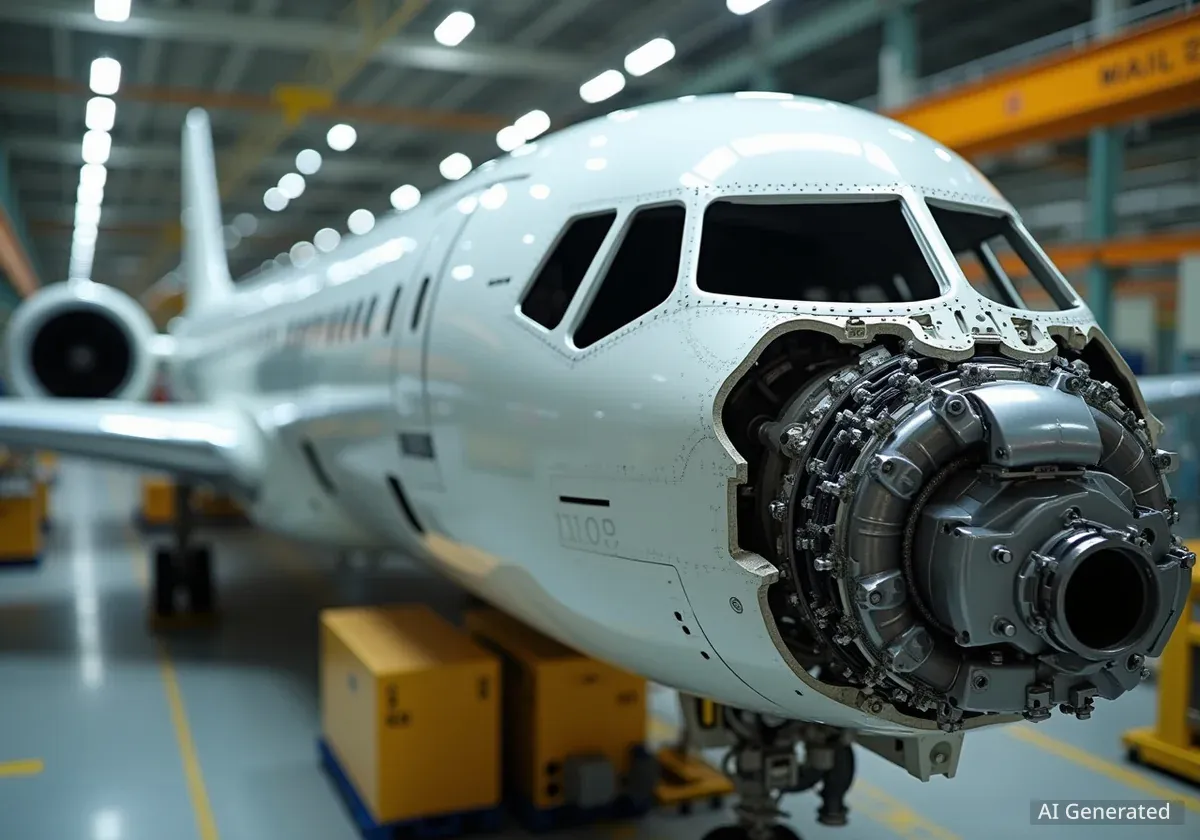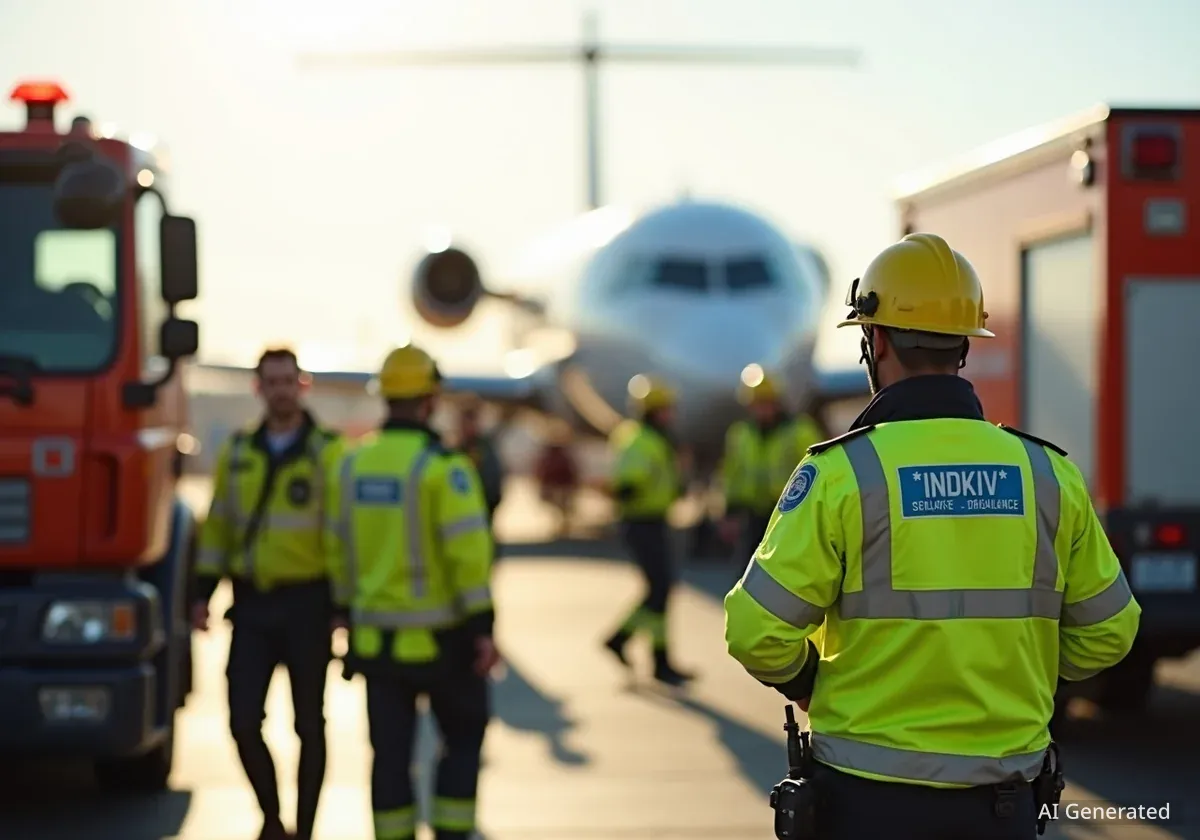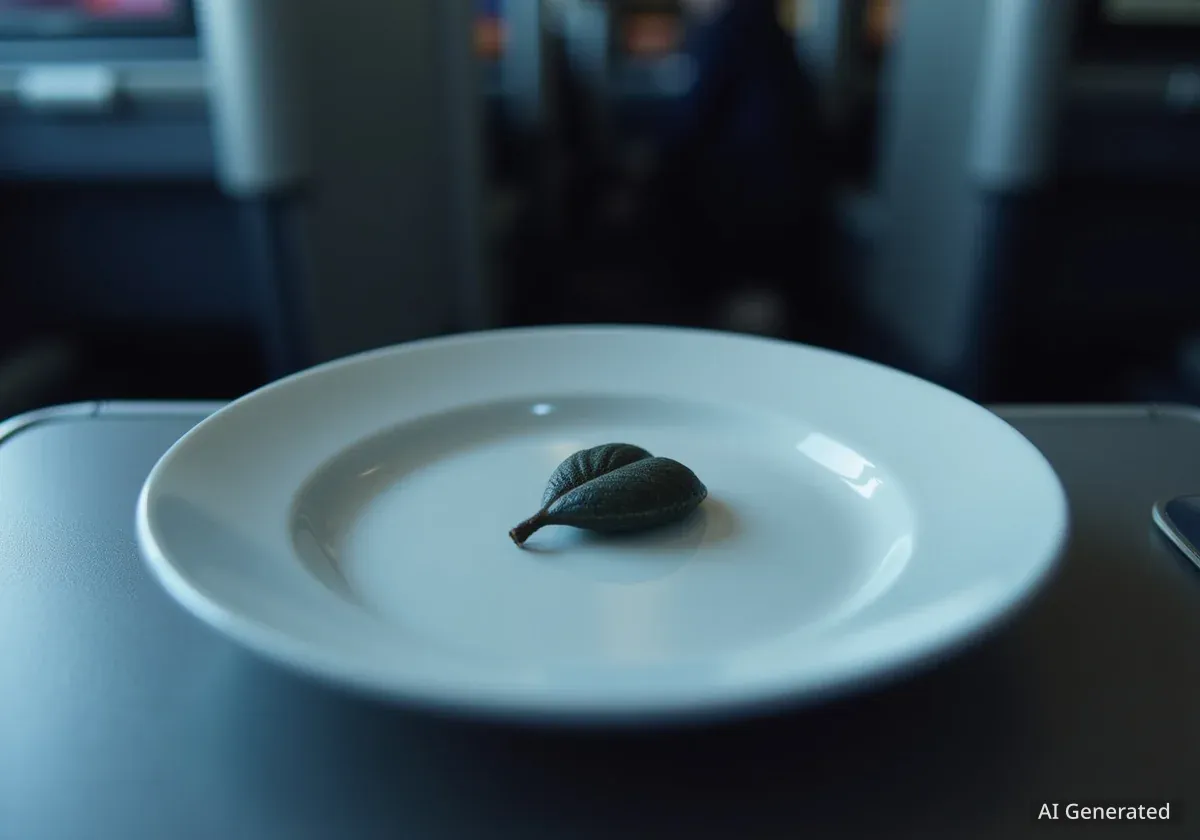China's ambitious plan to challenge the global aviation duopoly of Boeing and Airbus is encountering significant headwinds. Deliveries of the homegrown C919 passenger jet are falling well behind schedule, raising questions about the program's ability to scale up amidst supply chain vulnerabilities and geopolitical friction.
The state-owned manufacturer, COMAC, is struggling to meet its production targets for the single-aisle aircraft, a direct competitor to the Boeing 737 and Airbus A320. This slowdown highlights a critical dependency on Western technology, particularly from the United States, which complicates Beijing's goal of technological self-reliance.
Key Takeaways
- COMAC is expected to miss its C919 delivery targets, with only seven aircraft delivered as of October this year against a goal of 30 in 2025.
- The C919 program relies heavily on Western suppliers, including 48 major suppliers from the U.S. like GE and Honeywell.
- Geopolitical tensions between the U.S. and China are directly impacting the supply chain, particularly for critical components like engines.
- The aircraft currently lacks certification from U.S. (FAA) and European (EASA) regulators, limiting its operation to domestic Chinese routes.
Production Reality vs. Aspiration
Despite high hopes for the C919, which completed its first commercial flight in 2023, the production ramp-up has been slower than anticipated. According to data from aviation consultancy Cirium, COMAC delivered 13 of the jets to Chinese carriers last year. As of October this year, only seven more have been delivered.
This pace puts the manufacturer's goal of delivering 30 jets in 2025 in jeopardy. Currently, the only airlines operating the C919 are China’s major state-owned carriers: Air China, China Eastern, and China Southern, with a combined fleet of around 20 aircraft.
By the Numbers
- Total C919s in service: Approximately 20
- 2024 Deliveries (as of Oct): 7 aircraft
- 2025 Delivery Target: 30 aircraft
- U.S. Major Suppliers: 48
- European Major Suppliers: 26
The Western Supply Chain Dilemma
A core challenge for the C919 program is its deep reliance on an international supply chain, which makes it susceptible to trade disputes. Analysts at Bank of America note that the aircraft sources parts from 48 major suppliers in the United States and 26 in Europe, compared to just 14 from China.
This dependence is most critical in the aircraft's propulsion system. The C919 uses LEAP-1C engines, a product of a joint venture between GE Aerospace of the U.S. and Safran of France. Because these engines contain U.S.-controlled technology, they require American export licenses.
Dan Taylor, head of consulting at aviation firm IBA, explained that U.S.-China trade tensions have "directly affected" the C919's delivery schedules. He pointed to a temporary suspension of export licenses for the LEAP-1C engines around May, which disrupted output plans before being resumed in July.
"Engine and avionics dependence on Western suppliers continues to expose the program to policy decisions beyond COMAC’s control," Taylor stated.
This vulnerability was echoed by Max J. Zenglein, an economist at The Conference Board think tank.
"COMAC faces significant risk from the volatile policy environment, with its supply chains vulnerable to export restrictions and tit-for-tat measures between the U.S. and China," Zenglein said. He added that critical dependencies have become "political bargaining chips."
The Long Road to Global Acceptance
Beyond production hurdles, the C919 faces a significant barrier to entering the global market: international certification. While several airlines outside China, including AirAsia, have shown interest, the jet is not yet certified by the U.S. Federal Aviation Administration (FAA) or the European Union Aviation Safety Agency (EASA).
Without these crucial approvals, the C919 cannot operate in most international markets. Experts believe securing these certifications could take years, effectively grounding the aircraft within China's borders for the foreseeable future.
What is International Certification?
For an aircraft to fly in most countries, it must be certified by that country's aviation authority, such as the FAA in the United States or EASA in Europe. This process involves a rigorous review of the aircraft's design, manufacturing, and performance to ensure it meets stringent safety standards. Without it, an aircraft is generally restricted to its country of origin.
Richard Aboulafia, managing director of AeroDynamic Advisory, outlined the three pillars required for the C919's success. "It needs to have each one of three things: good economics, a prompt global product support network, and certification from safety agencies," he said. "Any one of these three alone doesn’t mean much."
Developing a Homegrown Alternative
To reduce its foreign dependency, China is developing its own engine, the CJ-1000A, through the state-owned Aero Engine Corporation of China (AECC). However, according to IBA, this engine is still in the testing phase, meaning the reliance on the GE-Safran LEAP engine will continue for the foreseeable future.
Zenglein noted that while the goal has always been to reduce foreign reliance, it remains a challenging process. He also suggested that the slow production ramp-up may not be solely due to geopolitical issues, but also a cautious approach that prioritizes "quality and safety."
An Unshaken Duopoly
While the C919 represents a major step for China's aerospace industry, analysts agree that it will take many years for COMAC to meaningfully challenge the Boeing-Airbus duopoly. The domestic market remains a massive opportunity, with Airbus forecasting that China will need 9,570 new passenger aircraft between 2025 and 2044.
However, Airbus is not standing still. The European manufacturer is expanding its own footprint in China with a second assembly line for its A320 family of aircraft—a direct competitor to the C919—set to open in 2026.
For now, the C919's journey is a lesson in the complexities of modern manufacturing. Its flight path is tied not just to engineering and production, but to the unpredictable currents of global politics and the long-established trust in Western aviation safety standards.





